Using Zhuyin Input on a Chinese Keyboard // Just HOW on Earth Does it Work?!
DID YOU KNOW || Pinyin is used throughout mainland China, Hong Kong, and Macau.
But have you ever heard of Zhuyin input or BOPOMOFO?
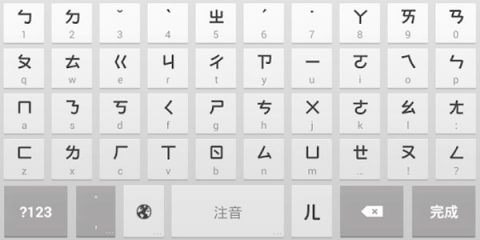
Pinyin is the only form of romanisation for Chinese characters.
That is, it’s the only way Chinese characters are transcribed into the roman alphabet.
However, that doesn’t mean it’s the only way to write Chinese characters…
Apart from the classic ‘drawing characters’ method, there is also another way to write in Chinese…
Let’s take you through a guide to Zhuyin (Bopomofo).
Bopomofo || Good Ol’ Pinyin
Bopomofo || What’s in the Name?
Bopomofo || Bopomofo vs Pinyin
Bopomofo || How do you Read Zhuyin?
Bopomofo || Who Uses Bopomofo?
Bopomofo || The History Behind it
Bopomofo || Should I Learn to Use a Zhuyin Keyboard?
BONUS || Local Romanisation Spellings
Bopomofo || FAQs
Good ol’ Pinyin
拼音 pinyin
Chinese characters are difficult not only for those trying to learn Mandarin Chinese but also for Chinese people themselves.
FUN FACT || Pinyin was introduced as a romanisation of Chinese characters as a government initiative in the 1950s.
This drastically improved the literacy rate in adults.
And drastically improves the ease of the Chinese language learner experience!
Bopomofo || What’s in the Name?
注音 (zhuyin)
Bopomofo? Why do we refer to Zhuyin input as ‘Bopomofo’?
Does the word ‘qwerty‘ mean anything to you?
Yes, that’s right.
Just like how we refer to a ‘qwerty’ keyboard (or qwertz if you’re German), the name bopomofo comes from the first 4 characters on the keyboard of Zhuyin input; bo po mo fo (ㄅㄆㄇㄈ).
Just like on a standard English keyboard the first 6 letters spell out qwerty.
So. Bopomofo!
This means that all those times we transcribe Chinese characters into the roman alphabet, instead it is transcribed into ‘bopomofo’ characters.
e.g.
注音 | = Zhuyin (pinyin) | = ㄓㄨˋㄧㄣ (zhuyin, bopomofo)
Bopomofo || Bopomofo vs. Pinyin
Pinyin
This is the most common system that transcribes Chinese symbols into a phonetic system.
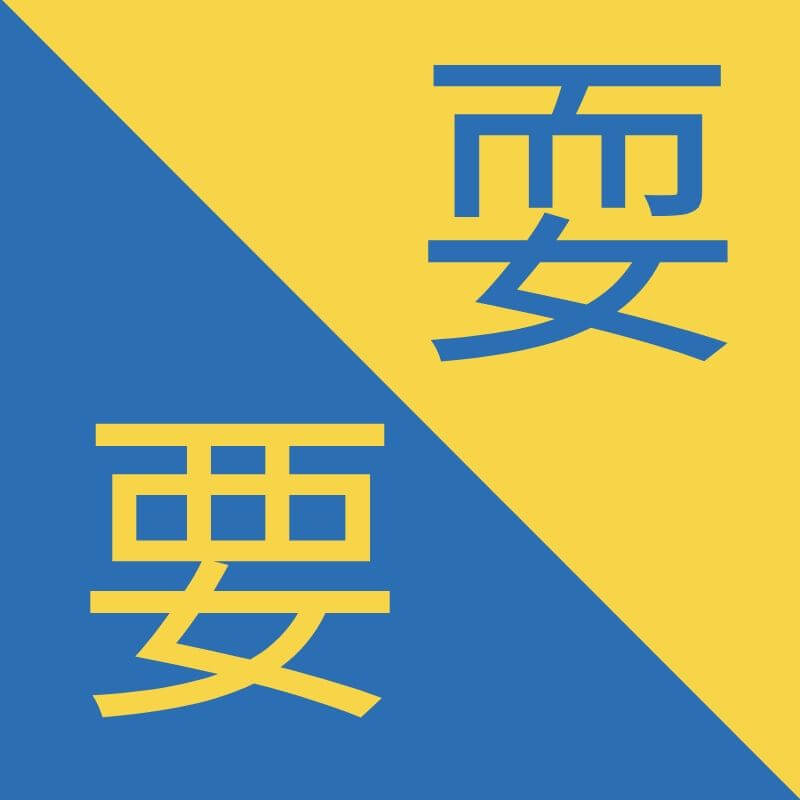
It is used in mainland China and is the preferred phonetic system for foreigners learning Chinese.
Instead of transcribing characters into… other characters you can’t read straight away (which is seemingly what transcribing Chinese characters into Zhuyin input does), pinyin transcribes Chinese characters into phonetic symbols from the Roman alphabet.
So, for many foreigners whose first language uses the Roman alphabet (e.g. English!), using pinyin is a clear first choice.
However!
Many Chinese learners will also have found out that not is all quite what it seems.
Yes, Chinese characters are transcribed into the Roman alphabet.
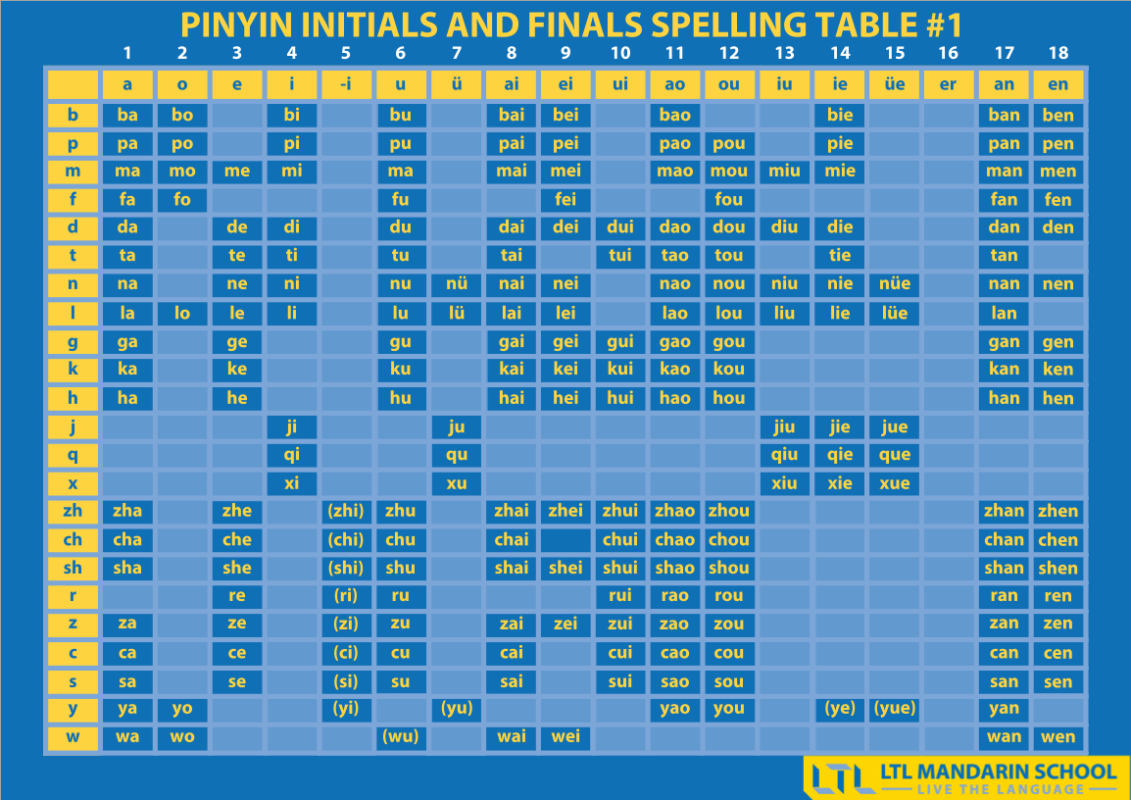
But, you just need to study Chinese for a few minutes before you realise that you don’t pronounce a ‘c’ in pinyin in the same way as a ‘c’, but instead more like a ‘ts’.
So, although pinyin is very useful, it’s not perfect…
And it certainly doesn’t match up directly with roman alphabet pronunciations.
You should first learn the sounds of the Chinese language and how they transcribe to their romanization counterparts.
BONUS RESOURCE || Check out our Pinyin keyboard here to get a feel for pinyin, the only difference to typing Pinyin to English is the tone needs to be selected:
Bopomofo
Whilst pinyin may be the main romanisation system used to transcribe mandarin, there are other phonetic systems.
Zhuyin, or Zhuyin Fuhao, concentrates on sounds – phonetics – unlike pinyin which concentrates on the romanisation spelling.
This means that the sounds that Zhuyin input transcribes are more similar to the actual sound that you should produce.
In turn, meaning that your pronunciation is potentially a lot better!
No more getting confused between the ‘j’ and the ‘zh’, the ‘q’ and the ‘ch’!
It’s super similar to how the Japanese “alphabet” of Hiragana and Katakana function. In fact, some of the symbols look almost identical!
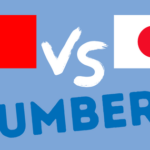
Chinese Vs Japanese // Counting and Numbers (What’s The Story?)
Are Chinese and Japanese Numbers the same? This article might surprise you. We focus on Chinese Numbers vs Japanese Numbers and debunk some myths.
Bopomofo || How do you Read Zhuyin?
The Zhuyin bopomofo symbols with their corresponding pinyin:
| Zhuyin | Pinyin |
|---|---|
| ㄅ | b |
| ㄆ | p |
| ㄇ | m |
| ㄈ | f |
| ㄉ | d |
| ㄊ | t |
| ㄋ | n |
| ㄌ | l |
| ㄍ | g |
| ㄎ | k |
| ㄏ | h |
| ㄐ | j |
| ㄑ | q |
| ㄒ | x |
| ㄓ | zh |
| ㄔ | ch |
| ㄕ | sh |
| ㄖ | r |
| ㄗ | z |
| ㄘ | c |
| ㄙ | s |
| ㄚ | a |
| ㄛ | o |
| ㄜ | e |
| ㄝ | ê |
| ㄞ | ai |
| ㄟ | ei |
| ㄠ | ao |
| ㄡ | ou |
| ㄢ | an |
| ㄣ | en |
| ㄤ | ang |
| ㄥ | eng |
| ㄦ | er |
| ㄧ | i |
| ㄨ | u |
| ㄩ | u |
These Zhuyin symbols are then combined together, as well as the tone marker, to form Chinese characters.
Another important thing to note when using Zhuyin input is that you also need to add the correct tone mark.
Yup – that means you have to know the tone of the character when writing it!
BUT WAIT, we are here for you! Check out this super quick, 2 minute guide to tones!
These Zhuyin symbols may look similar to the Japanese Hiragana or Katakana writing system.
There’s some debate on how similar these are and whether the Japanese influence on local culture had something to do with this.
In reality, they’re entirely not similar. They kind of look the same. Sometimes.
For example,
| ㄜ | e |
| ㄝ | ê |
These two Zhuyin input symbols look very similar to the Japanese せ (read as ‘se’) and さ (read as ‘sa’).
But really, they’re only similar in that they’re both phonetic writing systems.
Bopomofo || Who Uses Bopomofo?
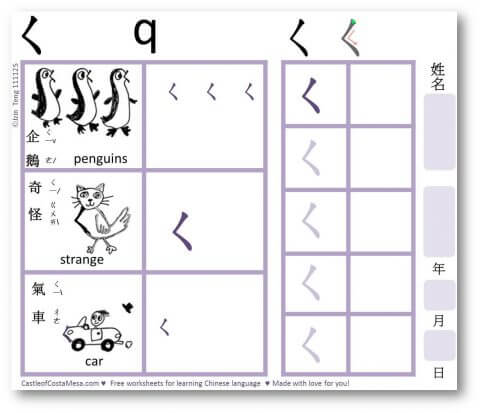
Unlike Mainland China, Taiwan uses bopomofo to teach young children Mandarin Chinese.
Many people here also use Zhuyin input on their computers instead of the pinyin input system.
In fact – most locals have a hard time trying to use Pinyin.
This is largely for another reason too, which is that Taiwan and mainland China’s romanisation systems are also different.
So for example, if someone from Taipei saw Chinese character romanised into Pinyin spelling, they might be a tad confused.
Zhuyin input is also used in some children’s books or materials together with Chinese characters to help with comprehension.
You might also find some shops, restaurants, or other signs using the Zhuyin / Bopomofo alphabet alongside the characters.
This is a great help if you’re trying to learn it yourself!
Bopomofo || The History Behind it
Bopomofo, or Zhuyin, was first developed in the early 20th century.
Pinyin was introduced to Mainland China in the 1950s and has since stuck as the official phonetic system.
The first name of Zhuyin was “Phonetic Alphabet of the National Language” (國音字母). This was first proposed in 1928.
In 1930 Zhuyin was then later referred to as the official name of Zhùyīn Fúhào (注音符號). This literally means “Phonetic symbols”.
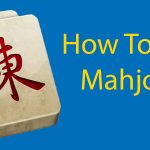
An Introduction to Mahjong || The Experts Guide on How To Play Mahjong
Mahjong is a fun way to learn Chinese characters and numbers, and what they signify for language, history and culture. But how to play Mahjong?
Bopomofo || Should I Learn to Use a Zhuyin Keyboard?
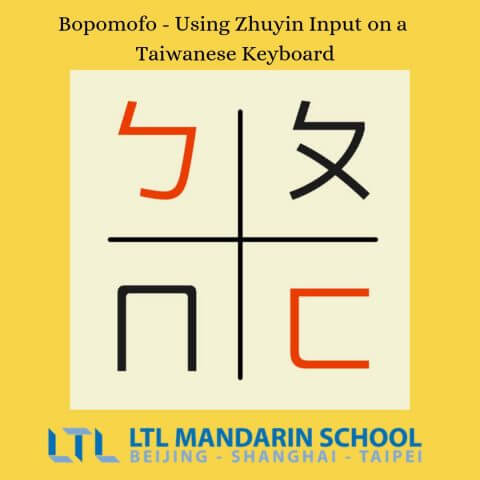
There are some advantages to learning to use Zhuyin input.
Many students rely on pinyin too much when they first begin learning Chinese.
Relying on pinyin is easy to do since it uses the same script as your native language, so it’s easy to learn from.
However, this sometimes stunts learners as they learn Chinese characters more slowly.
What’s more, bopomofo is an entire phonetic system. The sounds that are transcribed into Zhuyin are much more similar to the sounds to be produced.
Pinyin relies on using romanisations, which don’t necessarily have the sounds available to transcribe the exact sounds of the Chinese language.
Feeling more and more inspired to come to Taipei? If so, see what Tobias and Mikkel thought:
BONUS || Local Romanisations – DIFFERENT
OK. One important thing to note about all of this is that… Taiwan uses a different Romanisation system to Mainland China, too.
Remember earlier we mentioned that locals have a hard time inputting or understanding Pinyin?
This may seem odd since most people can use the Roman alphabet, right?
Well, that’s because the Pinyin romanisation is actually different to how locals romanise things.
So, ask a local person to type “高雄” (a city in the south) on your Pinyin keyboard and they’ll get lost attempting to type ‘Kaohsiung’ and getting nowhere with finding the right characters (which, in pinyin, would be Gāoxióng)
(I chose this example of Kaohsiung because it is so different from “Gaoxiong”, the Pinyin spelling, and it took me ages to remember this local spelling!)
This is basically because in 1979, mainland China decided to standardise everything into Pinyin – but Taiwan decided to stick to the traditional “Wade-Giles” spelling of Chinese.
This was also used in mainland China previously, which is where we get variations in Beijing and Peking from (both = 北京).
| PINYIN | WADE-GILES | 漢字 |
|---|---|---|
| xian zai | hsien tsai | 現在 |
| yi | i | 一 |
| Ch’ung-ch’ing | chongqing | 重慶 |
| xue xiao | hsüeh hsiao | 學校 |
| gao xiong | kaohsiung | 高雄 |
Have you ever heard of Bopomofo before? Do you have any questions?
Let us know in the comments below and we’ll do our best to reply as soon as possible.
Bopomofo || FAQs
What does bopomofo mean?
Bopomofo is the equivalent of the term QWERTY.
The first 4 characters on the Zhuyin input keyboard are bo po mo fo (ㄅㄆㄇㄈ).
Just like on a standard English keyboard, the first 6 letters spell out qwerty.
Is there a Chinese Alphabet?
Oddly not.
There is no Chinese Alphabet, just thousands upon thousands of characters. Some of the characters look remarkably similar also!
Can I practice typing Chinese on my phone?
Yes you can, follow these steps:
1 – Go to System Preferences
2 – Choose Keyboard
3 – Choose Input Sources
4 – Click the + symbol
5 – Select Chinese (Simplified) – Pinyin – Simplified then click Add.
6 – Make sure ‘Show Input menu in menu bar‘ is ticked.
When was bopomofo first used?
Bopomofo, or Zhuyin, was first developed in the early 20th century.
Pinyin was introduced to Mainland China in the 1950s and has since stuck as the official phonetic system.
Do locals in Taipei use pinyin or bopomofo the most?
Many people in Taipei use Zhuyin input on their computers or laptop instead of the pinyin input system.
Zhuyin input is also used in some children’s books or materials together with Chinese characters to help with comprehension.
Want more from LTL?
If you wish to hear more from LTL Language School why not join our mailing list.
We give plenty of handy information on learning Chinese, useful apps to learn the language and everything going on at our LTL schools!
Sign up below and become part of our ever growing community!
BONUS | Want to study the local Taiwanese dialect known as Hokkien? We provide Hokkien classes in person and online.

 Hi, my name is Greta. I am from Italy and I work as a student advisor at our Taipei school.
Hi, my name is Greta. I am from Italy and I work as a student advisor at our Taipei school. Hi, my name is Manuel! I am from Spain and I am a Student Advisor at LTL. I’m now based at our Seoul School after living 3 years in Taipei.
Hi, my name is Manuel! I am from Spain and I am a Student Advisor at LTL. I’m now based at our Seoul School after living 3 years in Taipei.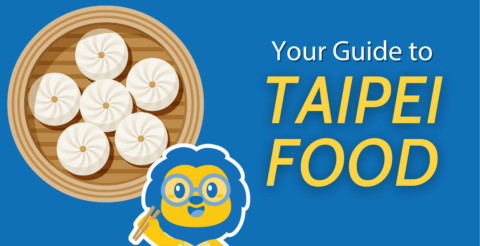

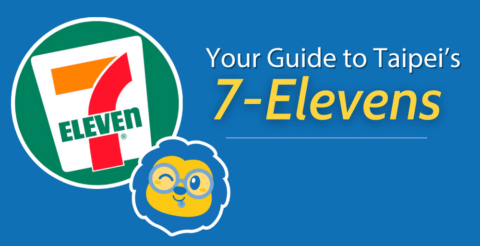

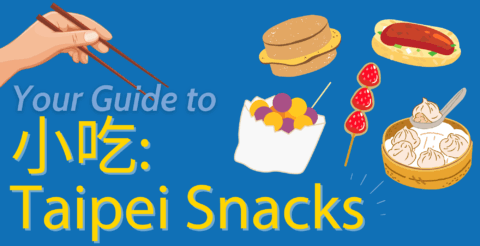

8 comments
Interesting read, didn't realise about bopomofo!
Thanks for your comment Tomasz
This is so informative. Very interesting history reading about the wade-giles system also
Thanks for the kind words Shane 😎
Never knew QWERTY and BOPOMOFO were the same!
Learn something new everyday Bethany!
[…] letters, but they are a different set and sound totally different. Taiwanese uses zhuyin fuhao (aka bopomofo). Zhuyin fuhao uses a totally different set of […]
[…] While Zhuyin is still widely used in Taiwan, the switch to pinyin in China was significant. […]